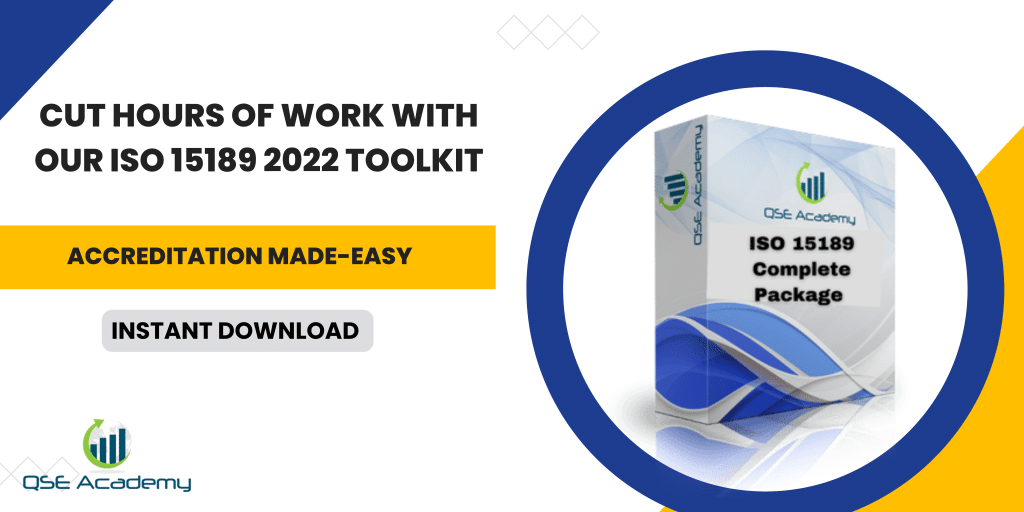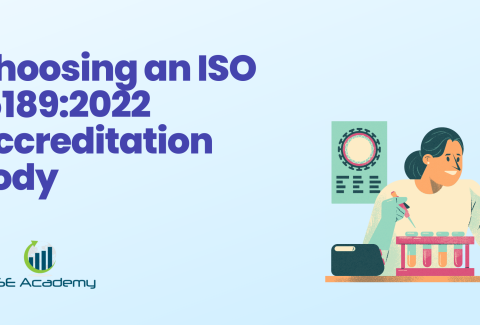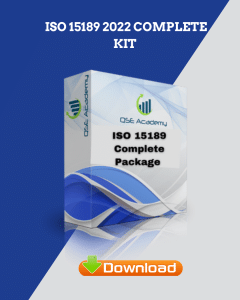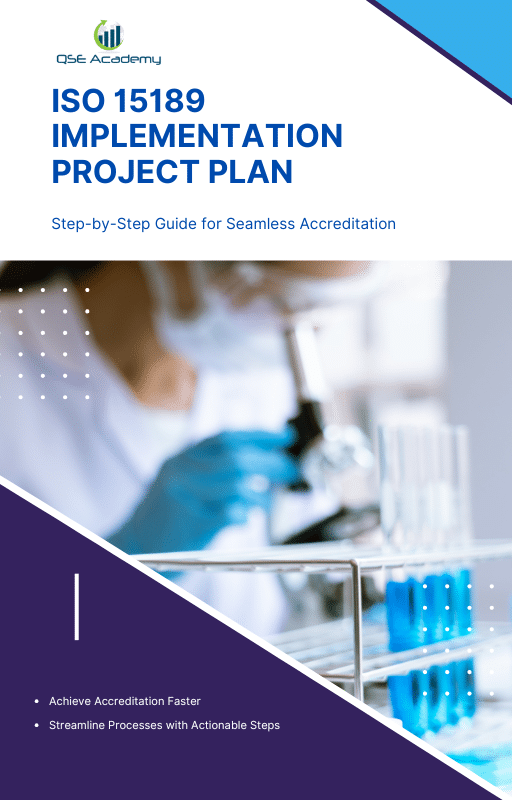ISO 15189:2022 Accreditation‑Body Pricing Explained
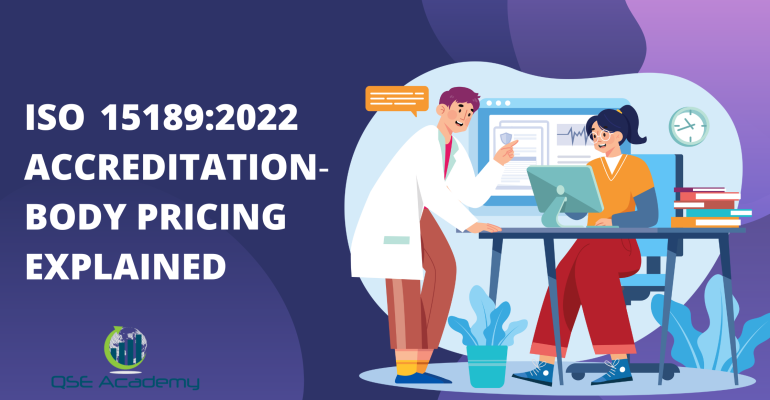
ISO 15189:2022 Accreditation‑Body Pricing Explained
Last Updated on October 22, 2025 by Hafsa J.
Understanding Accreditation-Body Pricing for ISO 15189:2022
If you’ve ever gone through an ISO 15189 accreditation process, you know how unpredictable the pricing can feel. Some labs get a quote that seems reasonable, while others are shocked by how high the numbers climb — even when their operations look similar on paper.
Here’s what I’ve noticed after working with clinical and medical laboratories worldwide: the confusion usually comes from not understanding how accreditation bodies actually build their fees. It’s not just about paying an “application fee.” You’re paying for assessor time, travel, and the complexity of your lab’s scope — and every one of those factors adds up differently.
In this article, we’ll unpack exactly how ISO 15189:2022 accreditation-body pricing works. You’ll see what drives the costs, which fees are negotiable (and which aren’t), and how smart planning can save your lab thousands before you even submit your application.
Now, let’s start with the basics — what actually affects your total accreditation cost.
Factors Affecting ISO 15189:2022 Accreditation Costs
When an accreditation body calculates your fee, they don’t just pull a number out of thin air. They look closely at your laboratory’s scope, size, and complexity. These three factors determine how much time — and how many assessors — are needed to confirm your compliance with ISO 15189:2022.
Here’s what usually drives the total cost:
-
Scope of accreditation: The broader your scope (the number of tests, equipment types, or departments), the higher the cost. Each test method adds time to the assessment.
-
Number of staff and locations: Multi-site or high-staff operations mean more interviews, more documentation, and more on-site work.
-
Assessment man-days: Accreditation bodies charge based on how many assessor-days are required. It’s their way of quantifying effort.
-
Specialized assessors: If your lab performs rare or complex tests, you might need technical assessors with specific expertise — and they cost more.
Pro Tip: Start small. Limit your initial scope to the most critical tests. You can expand later once you’ve built confidence and data for additional methods.
Common mistake: Some labs apply for a full scope right away to “get it over with.” That often backfires. The more complex your scope, the more time assessors need — and the higher your fee.
I once worked with a mid-sized clinical lab that trimmed its scope during pre-assessment. They reduced their man-days from five to three — saving nearly 25% of their total cost. That’s how planning smart pays off early.
Now that you know the cost drivers, let’s see how different accreditation bodies structure their pricing.
Accreditation Body Pricing Models Compared
Not all accreditation bodies price their services the same way. Even though the end goal — ISO 15189:2022 accreditation — is identical, how they get there (and how they bill for it) can vary a lot.
Some accreditation bodies, like SANAS in South Africa or JAS-ANZ in Australia, use a man-day rate model. That means you pay based on how many assessor days are needed for your lab. Others, such as UKAS in the UK, combine a base fee plus assessor rates, covering administration, application review, and assessor time.
Here’s a quick breakdown of what you might encounter:
-
Application or registration fee: A one-time charge when you first apply.
-
Assessment fee: Based on man-days; includes document review and on-site assessment.
-
Assessor travel and accommodation: Usually billed separately.
-
Annual or surveillance fees: Charged yearly to maintain accreditation.
Example: A 10-person diagnostic lab in Southeast Asia received two quotes — one from SANAS and one from JAS-ANZ. The difference? Almost 30%. Why? SANAS included assessor travel separately, while JAS-ANZ rolled it into their base rate. Same assessment, different billing structure.
Pro Tip: Always request a detailed cost breakdown. Ask for each component — man-days, travel, and annual fees — to be itemized. That way, you’ll know what’s fixed and what might fluctuate later.
Pitfall to avoid: Don’t compare totals without checking what’s included. One quote may look cheaper, but if it excludes travel or VAT, it can easily end up costing more in the end.
Next, let’s talk about something most labs forget to plan for — the hidden costs no one mentions in the quote.
Hidden or Variable Costs Laboratories Often Miss
Here’s something most labs discover too late — the official quotation from your accreditation body isn’t the full story. There are hidden or variable costs that can sneak up on you if you’re not ready for them.
These include:
-
Assessor travel and accommodation: If assessors need to fly or stay overnight, those costs are passed to you.
-
Document translation or printing: Especially relevant if your documentation isn’t in the accreditation body’s primary language.
-
Staff training and internal audits: These are essential for readiness but rarely included in the quoted fee.
-
Preparation time: Every hour your team spends gathering records or rewriting SOPs is a real internal cost.
Pro Tip: Always set aside a 15–20% buffer in your budget for these indirect expenses. You’ll thank yourself later.
I once worked with a regional hospital lab that budgeted only for assessor fees. Everything seemed fine until they learned the assessors were based out of the capital — hundreds of kilometers away. Travel, lodging, and meal costs added another $1,200 they hadn’t planned for.
Common pitfall: Treating accreditation as a simple “invoice” item. It’s a full project that pulls resources, time, and coordination from across your lab.
Now that you know where the hidden costs come from, let’s move to something practical — how to request and compare accreditation quotations the smart way.
How to Request and Compare Accreditation Quotations
Once you’ve decided to pursue ISO 15189:2022 accreditation, the next big step is requesting quotes from accreditation bodies. But here’s the tricky part — not all quotes are built the same, and comparing them side-by-side can get confusing fast.
Here’s a straightforward way to handle it:
-
Define your scope clearly.
List your testing areas, number of methods, and lab locations. The more specific you are, the more accurate your quote will be. -
Submit complete documentation.
Accreditation bodies base their estimates on complexity. Missing or incomplete information usually leads to conservative (and higher) estimates. -
Ask for an itemized quote.
Request that all components — assessor man-days, admin fees, and travel costs — be listed separately. -
Compare apples to apples.
Don’t just look at the total. Look at what’s included. One quote may look lower but exclude VAT, assessor travel, or reassessment costs.
Pro Tip: Always ask whether the quote includes pre-assessment or surveillance fees. Many labs assume it’s a one-time payment, only to find out they’ll get billed again the following year.
Common pitfall: Going with the cheapest option without reviewing assessor credentials. If the team assigned to you lacks experience in your type of testing, you’ll end up spending more fixing nonconformities later.
Now that you’ve learned how to request and evaluate quotations, let’s look at ways to actively reduce your ISO 15189 accreditation costs without cutting corners.
Strategies to Reduce ISO 15189:2022 Accreditation Costs
You don’t have to accept every line item on a quotation as fixed. There are smart, practical ways to reduce your accreditation costs — without sacrificing quality or compliance.
Here’s what’s worked for many of the labs I’ve guided through ISO 15189 accreditation:
-
Start with a focused scope.
Begin by accrediting only your core tests. Once you’re stable, you can expand. It’s easier — and cheaper — to add methods later than to scale back a bloated scope. -
Use remote document reviews when possible.
Many accreditation bodies now allow partial or full remote assessments. This can dramatically reduce assessor travel and accommodation costs. -
Combine audits or accreditations.
If your lab also needs ISO/IEC 17025 or CAP compliance, combining assessments can lower overall fees since assessors can evaluate multiple standards in one visit. -
Invest in a digital QMS.
Document control software or ISO management tools can save hours during pre-assessment. Less back-and-forth with assessors means fewer days billed.
Real-World Example:
A private diagnostics lab I worked with switched to a hybrid audit model — on-site for testing review, remote for documentation. They cut their annual cost by almost $2,000 without reducing quality.
Pro Tip: Accreditation bodies reward preparedness. Labs that submit clean, complete documentation often need fewer assessor days in subsequent cycles — and that means smaller invoices over time.
Next, let’s cover what happens after accreditation — because those annual surveillance fees can catch you off guard if you’re not planning ahead.
What Happens After Accreditation – Ongoing Surveillance Fees
Getting accredited isn’t the finish line — it’s the start of a continuous cycle. Every ISO 15189-accredited lab goes through regular surveillance assessments, and yes, they come with their own costs.
Here’s how it usually works:
-
Annual or biannual surveillance visits: Accreditation bodies revisit your lab to ensure you’re still compliant. These are typically shorter than the initial assessment but still billed by man-days.
-
Reassessment every three to five years: A full re-evaluation of your system, similar in scope (and sometimes cost) to the original accreditation.
-
Travel and administrative costs: These still apply, even during shorter visits.
Pro Tip: Keep your management system “audit-ready” year-round. Labs that maintain consistent documentation and quality practices often need fewer assessor days — meaning lower fees during surveillance.
Common mistake: Treating accreditation as a one-time project. When the system isn’t maintained between visits, nonconformities pile up, and additional assessor days are often added to the next cycle — at your expense.
In my experience, labs that build accreditation tasks into their monthly routines — instead of rushing before audits — save both money and stress.
Now that we’ve walked through the full cost lifecycle, let’s wrap up with a few of the most common questions labs ask about ISO 15189 accreditation pricing.
FAQs – ISO 15189:2022 Accreditation Cost Questions
1. How much does ISO 15189:2022 accreditation usually cost?
There’s no fixed price tag. On average, most labs spend between $5,000 and $25,000 during the initial accreditation phase. It depends on your lab’s size, scope, and the accreditation body you choose. A single-site clinical lab with five staff will pay far less than a hospital network running multiple departments.
2. Can we get an estimate before applying?
Yes — and you absolutely should. Most accreditation bodies can give you a preliminary quotation once you provide details like staff count, test types, and locations. It’s a good way to plan your budget early and avoid surprises later.
3. Are there government grants or support programs for ISO 15189?
In some countries, yes. Public laboratories, research facilities, and even small private labs may qualify for national quality improvement funding or SME support programs. Check with your country’s accreditation body or ministry of health — these subsidies can significantly offset initial costs.
4. Do we pay the same fee every year?
Not quite. The first year is usually the most expensive because it includes the full assessment. Subsequent years typically involve lower surveillance fees, as they focus on maintaining rather than re-establishing compliance.
Now that you’ve got the key questions covered, let’s wrap up with the most important takeaway — how to plan your accreditation budget with confidence.
Plan Smart, Budget Confidently
ISO 15189:2022 accreditation is an investment — not just in compliance, but in credibility. The pricing might seem complex at first, but once you understand how accreditation bodies calculate their fees, it becomes manageable.
The key takeaway? Preparation equals savings. Labs that define their scope clearly, keep documentation ready, and maintain continuous compliance almost always spend less over time.
In my experience, the labs that succeed are the ones that treat accreditation as part of their quality culture — not just a project with a deadline. They budget wisely, plan early, and communicate openly with their accreditation body.
If you’re just starting your journey, you don’t have to guess.
You can use our ISO 15189 Cost-Planning Template to estimate your expenses or schedule a quick consultation to get a personalized cost breakdown.
Because when you understand how pricing works, you’re not just preparing for accreditation — you’re setting up your lab for long-term efficiency and confidence.
Whether it’s ISO 9001, ISO 22000, or the cosmetics-focused ISO 22716, I’ve spent my career I’m not here to call myself an expert—I prefer “enthusiast” because I truly love what I do. When I’m not writing about standards, you’ll probably find me playing Piano 🎹, connecting with people, or diving into my next big project💫. I’m an engineer specialized in the food and agricultural industry
make ISO standards less intimidating and more approachable for everyone.
turning complex jargon into clear, actionable steps that businesses can actually use.
There’s something incredibly rewarding about helping people navigate food safety and quality management systems
in a way that feels simple, practical, and even enjoyable.
I have a Master’s in QHSE management and over 12 years of experience as a Quality Manager
I’ve helped more than 15 companies implement ISO 9001, ISO 22000, ISO 22716, GMP, and other standards
My clients include food producers, cosmetics manufacturers, laboratories, and service companies
I believe quality systems should be simple, useful, and efficient.
Related Posts
ISO 15189:2022 Audit‑Duration Man‑Day Calculator
ISO 15189:2022 Accreditation Timeline in 6 Steps
Choosing an ISO 15189:2022 Accreditation Body
Cart
Recent Posts
Subscribe on YouTube
Recent Comments
- Asd on New Requirements Of The ISO 22000 2018 Version
- LAWRENCE on Root-Cause Analysis for Non-Conformities: Using the 8D Method
- grace on ISO 13485 Design History File Template
- alfredo avila on How to Implement ISO/IEC 17024: A Step-by-Step Guide?
- Engr. Shamsuddeen Dalhatu on ISO 9001 Requirements Checklist: A Comprehensive Guide

